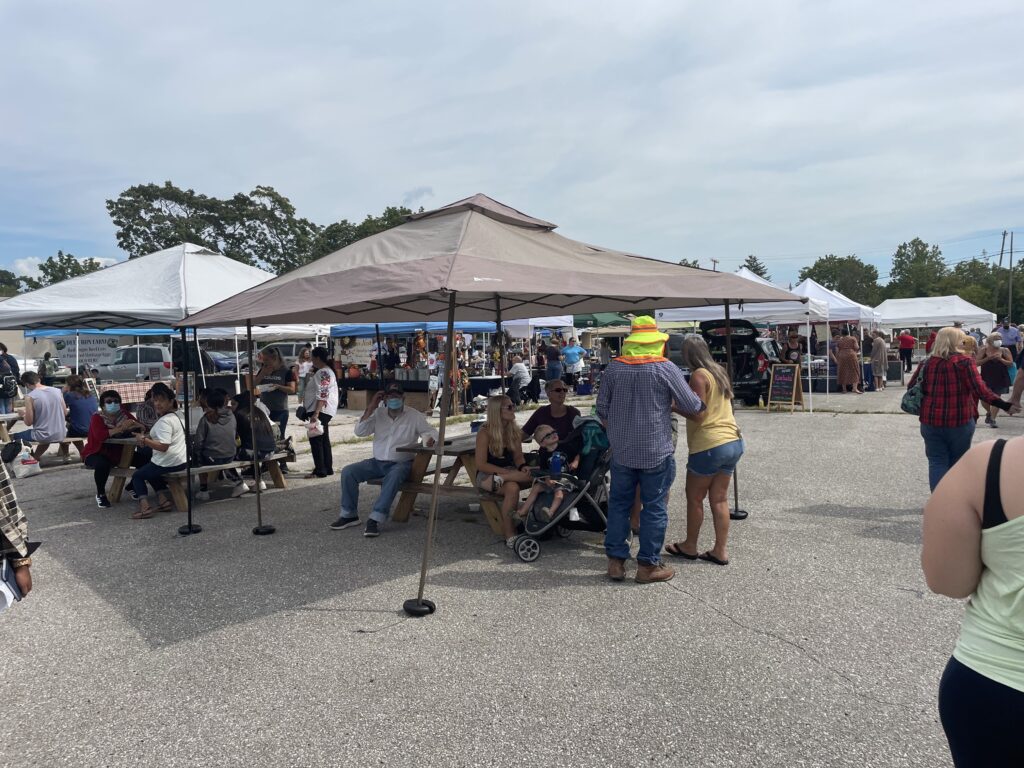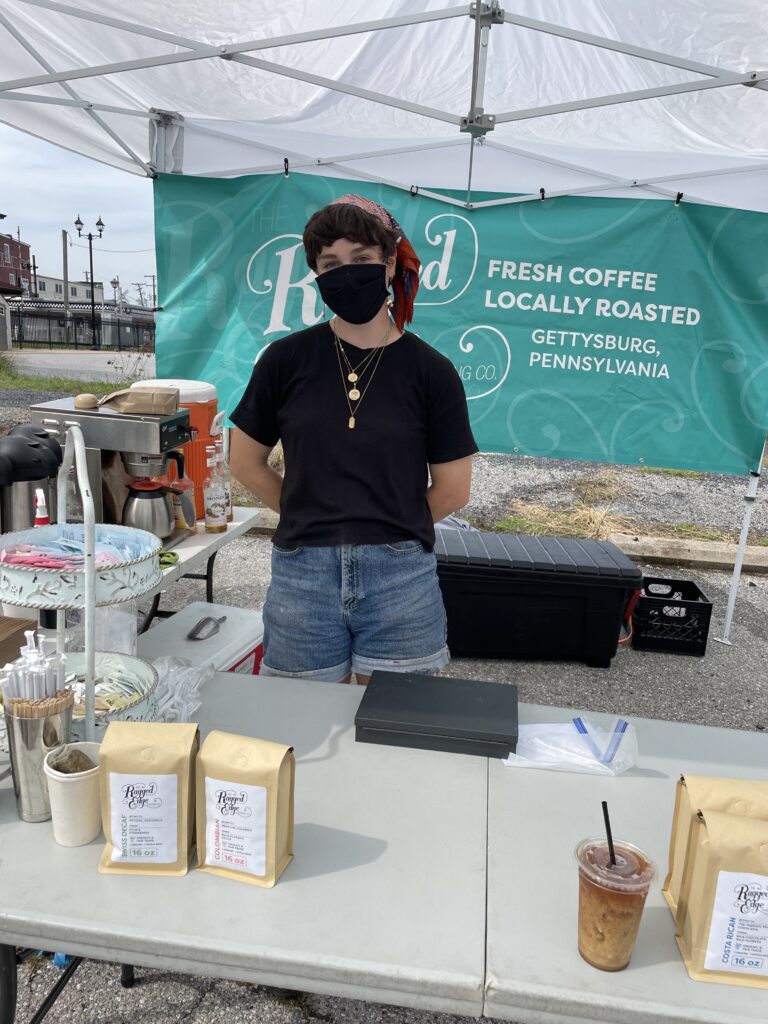Adams County Farmers’ Market Models Socio-economic Diversity
By Ethan Bruemmer and Annabel Gorman
Gettysburg College Environmental Journalism students visited Adams County Farmers Market (ACFM) on Saturday, leading to a lesson in economics and the value of shopping local.

The smell of beef jerky and barbecued meat filled the air surrounding the ACFM. As students walked towards the stands, they saw handwritten signs and smelled fresh produce. The parking lot was lively, with music and customers filling the space between stands.
A livestock farmer and vendor, Alex Bates, said that going to the farmers market “improved [his] sales” and allowed him an “opportunity to escape the farm.” The ACFM is a great example of how a farmers market works well, and how it presents many positive impacts on the community.

For example, marketing manager, Reza Junhlala, explained that the farmers market accepts SNAP benefits, giving buyers the opportunity to spend their resources on healthy, local products. In fact, the ACFM doubles snap benefits for customers. This is possible through a partnership with the Gettysburg Hospital Foundation, who sees providing locals with healthy options as an “investment” in their future health.
Local consumer and SNAP recipient, Barbara Chapman, has been going to the farmers market for 5 years. When asked if buying local was important to her, she enthusiastically said, “Yes, I want to support local businesses.” The use of SNAP allows Barbara to have the funds to support local businesses and frequent her favorite “goodies” stand.
Apart from the SNAP benefits, there are several other programs that help provide healthy food to the economically disadvantaged. The Healthy Options program, also funded by the Gettysburg Hospital Foundation, serves those who earn too much to qualify for SNAP but are still food insecure. Currently, there are approximately 550 recipients using the Healthy Options program.
In addition to being beneficial for customers, the ACFM provides vendors with the opportunity to sell their products and advertise their business. Livestock farmer, Alex Bates, says his sales went up in the past year. Customers care about the source of Bates’s most popular product, his chicken legs, which were sold out by the time we went to his stand.
The success of the ACFM in providing healthy food to low income communities follows the nationwide trend of farmers markets serving as community fixtures. In a journal article, Lisa Markowitz, an anthropology professor at the University of Louisville, says, “Farmers’ markets are perhaps the most visible of a variety of new food- farm initiatives that have emerged since the 1970s through the swelling of variegated social movements aiming to create a healthier, environmentally and economically sustainable, and more equitable agrifood system” (Markowitz, 2010).
Gentrification
Again, the ACFM is an example of a farmers market that works well and has a positive influence on its community. However, many farmers markets are losing money, causing gentrification, and are too expensive to be worth it.
The article “Supporting Equitable Food Systems Through Food Assistance at Farmers’ Markets,” explains that “In California, the nation’s largest producer of fruits and vegetables, research found that only 14% of markets were located in low-income neighborhoods, and only 22% accepted EBT” (Bhatia 2011). This exemplifies how many farmers markets do not provide the funds for low income communities to have access to fresh produce.
Furthermore, the article “Sowing Seeds of Displacement: Gentrification and Food Justice in Oakland,” talks about the fact that farmers markets are culturally geared towards white and affluent communities (Alkon 2018). It goes on to explain how many farmers markets that come into an urban community of color, hoping to help provide them with access to fresh produce, end with white customers coming to the farmers market anyways.
The ACFM is a farmers market that does provide people with easy access to EBT. However, one interesting fact about the farmers market is that it was entirely composed of white americans.
This is largely due to the large population of white farmers in Gettysburg, but often critics of farmers markets will say that they fail to appeal to black communities due to the fact that agriculture has been something that brings up bad memories of slavery and exploitation (Alkon 2018). Therefore, it is something black communities shy away from (Alkon 2018).
Ultimately, the ACFM does a good job providing enough benefits to make it an accessible, and affordable option for the citizens of Adams County. One vendor for 81 café smiled and said, “it’s really the sense of community that makes coming to the farmers market worthwhile,” and a sense of community is built by involving all the individuals of Adams County, regardless of socioeconomic status.

References
Alkon A.H. and Cadji J. 2018. “Sowing Seeds of Displacement: Gentrification and Food Justice in Oakland”, CA. International Journal of Urban and Regional Research.
Bhatia R. and Jones P. 2011. “Supporting Equitable Food Systems Through Food Assistance at Farmers’ Markets”. American Public Health Association.
Markowitz L. 2010. “Expanding Access and Alternatives: Building Farmers’ Markets in Low-Income Communities.” The Public Interest and the American Food Enterprise: Anthropological Policy Insights.
This story was updated on October 7th, 2021. The primary changes include grammatical changes such as sentence structure, and punctuation, as well as hyperlinks being added to the text. The title was also changed to be more explicit, and the credentials of Lisa Markowitz were also added for clarity on who she is.


